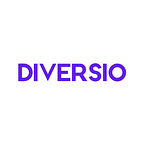Is Nasdaq’s Board Diversity Proposal a Silver Bullet for Workplace Inclusion?
In December 2020, Nasdaq released a new proposal requiring the majority of companies to have at least one woman and at least one person who identifies as either an underrepresented minority or LGBTQ on the board. The goal of the proposal, in the words of Nasdaq’s President and CEO Adena Friedman, was to help “champion inclusive growth and prosperity to power stronger economies”.
While garnering broad support from a number of industry groups, the proposal also sparked debate on pitting minorities against each other and virtue signaling, with individuals questioning the proposal’s intentions and effectiveness. At the end of the day, while it is important to strive for greater diversity at the executive level, we should not lose focus on the real issue at hand: workplace inclusion.
The Case for Focusing on Inclusion
At Diversio, we use data analytics to analyze workplace inclusion and identify pain points. We applied these algorithms to online reviews of NASDAQ composite companies to assess how inclusive they are perceived to be by employees. This method allowed us to score each company on 27 “inclusion pain points”, looking at things like adequate resourcing, pay equity and mentorship. We then looked at three potential drivers of workplace inclusion: board diversity, executive diversity, and formal diversity policies.
The assumption behind NASDAQ’s proposal is that a diverse board is a key indicator of an inclusive workplace. But the data tells a different story: leadership diversity was only weakly correlated with the frequency of inclusion pain points at a company-wide level. Rather than just focusing on executive- or board-level diversity, the companies that were successful in creating an inclusive workplace were the ones which had gone above and beyond to develop strong policies focused on supporting culture, fair management, career development, flexible work and safe work.
For one example, although 51.0% of NASDAQ composite companies have both more than one woman and more than one racial or ethnic minority on their executive teams, these companies did not outperform their peers in maintaining a fairly managed workplace free of favoritism and biased management. For another example, companies in the top quartile for executive gender diversity did no better job at creating a workplace which supports career development than the rest of the NASDAQ composite companies. Similarly, companies in the top quartile for ethnic or racial minority executive diversity scored no differently from peers on their ability to create a safe and supportive work environment.
The takeaway? While diversity policies like a Board diversity quota can move the dial from zero to one, they are no silver bullet for achieving true workplace inclusion — where all individuals are respected, accepted and able to bring their whole selves to work.
Policies, Programs and Tools for an Inclusive Workplace
When it comes to addressing inclusion pain points within companies, there are ways to have a real and meaningful impact on diversity and inclusion (D&I). Here are four ways to address these common challenges.
Use data to truly understand the issues. Beyond anecdotal evidence, town halls, and manager meetings, it’s easy not to have a firm grasp of the real issues. Surveys and other sources of data can provide the quantitative analysis that is necessary to dig deep into culture, employee morale and experience. With these insights, diversity programs and initiatives can have a more targeted, focused approach. For example, imagine spending millions of dollars on a female executive training program when most of your female employees are leaving at the junior level due to toxic leadership?
Cultivate a culture of self-learning and self-reflection: Research shows that the positive effects of diversity training rarely last beyond a day or two, and a number of studies suggest that they can actually activate bias or spark backlash. While people don’t respond well to mandatory trainings, letting employees choose how they learn about diversity and discrimination–reading books, viewing documentaries or speaking to friends and colleagues — makes them accountable and evokes a better response.
Ongoing and consistent training is key: Lack of program consistency is another obstacle in solving diversity and inclusion challenges. Programs are typically reactive, but a better approach is to offer consistent and ongoing training. Some companies have found success with linking D&I efforts to compensation, further incentivizing employees to do their part in fighting discrimination.
Create sponsorship programs that motivate: Frequently, underrepresented employees have a lack of clear career paths to advancement. While trainings help address and avoid bias toward underrepresented groups, it is also important to put sponsorship programs in place — whether formal or informal — to help them advance within the company.
Socialize the company’s ROI: Return on Inclusion: Underrepresented employees say they don’t have enough interaction with senior personnel, and leadership is often the last to buy in to D&I programs. This is likely because leadership is focused on other parts of the business that they believe impact the bottom line. To show them the importance of diversity, reassure them that according to McKinsey, diverse companies are more likely to financially outperform their peers.
Moving the Dial Beyond One
As we look to move the dial further beyond one on the D&I front, it has become clear that board diversity is only one piece of the puzzle. For a truly inclusive future, companies need to think critically about the employee experience, and implement specific, data-driven recommendations which tackle any pain points. Ultimately, the Nasdaq proposal offers a starting point to achieve greater diversity, but companies need inclusion to allow diversity to thrive.
